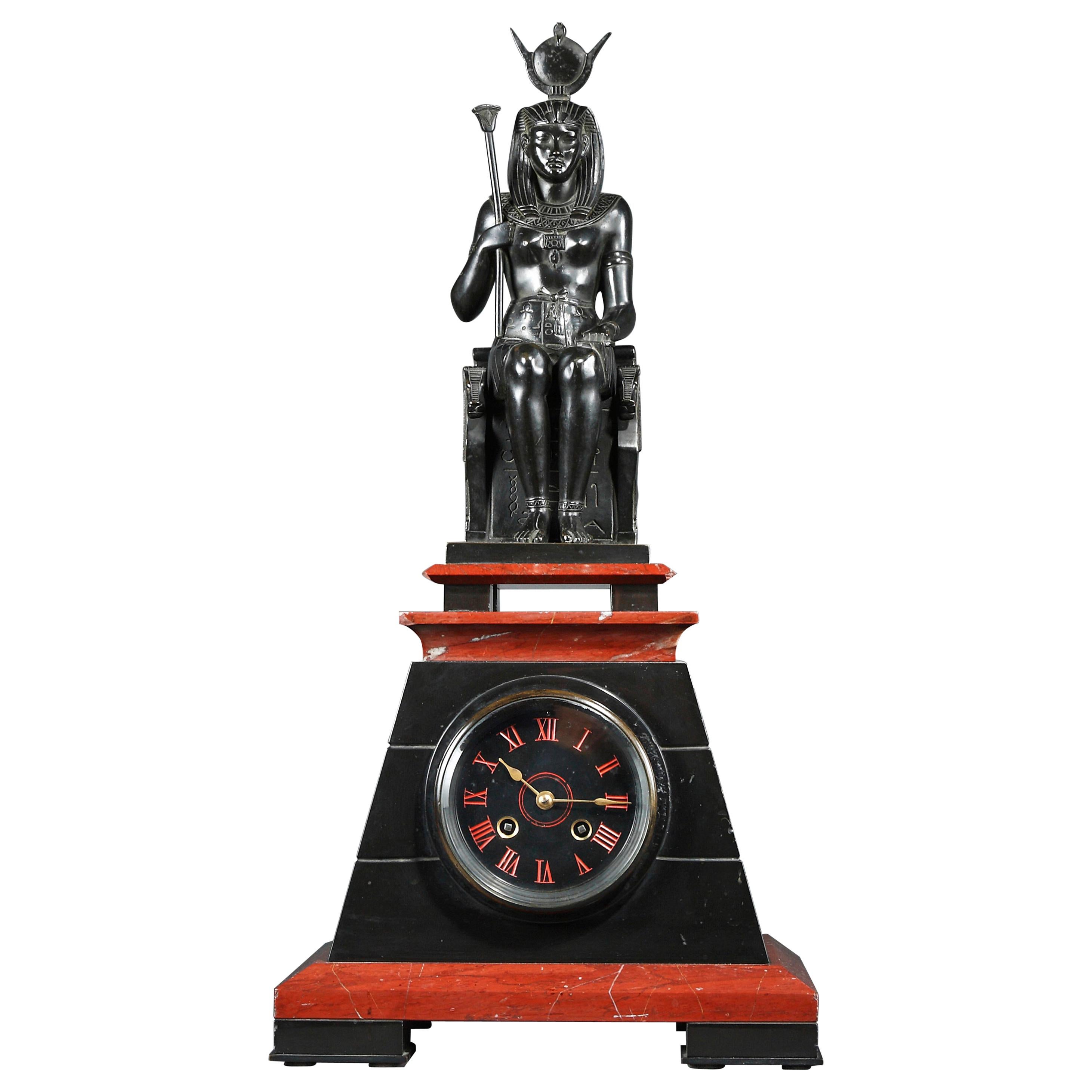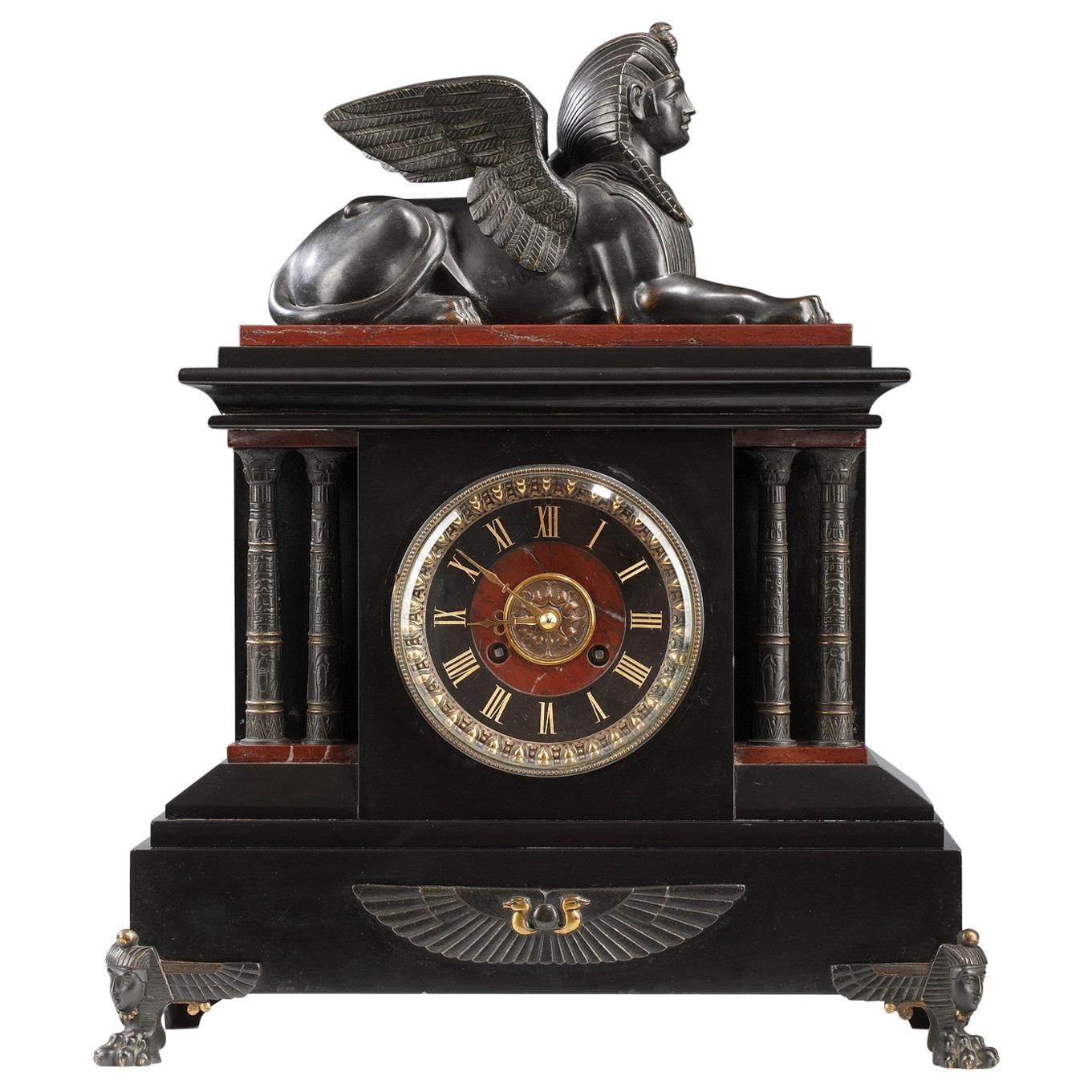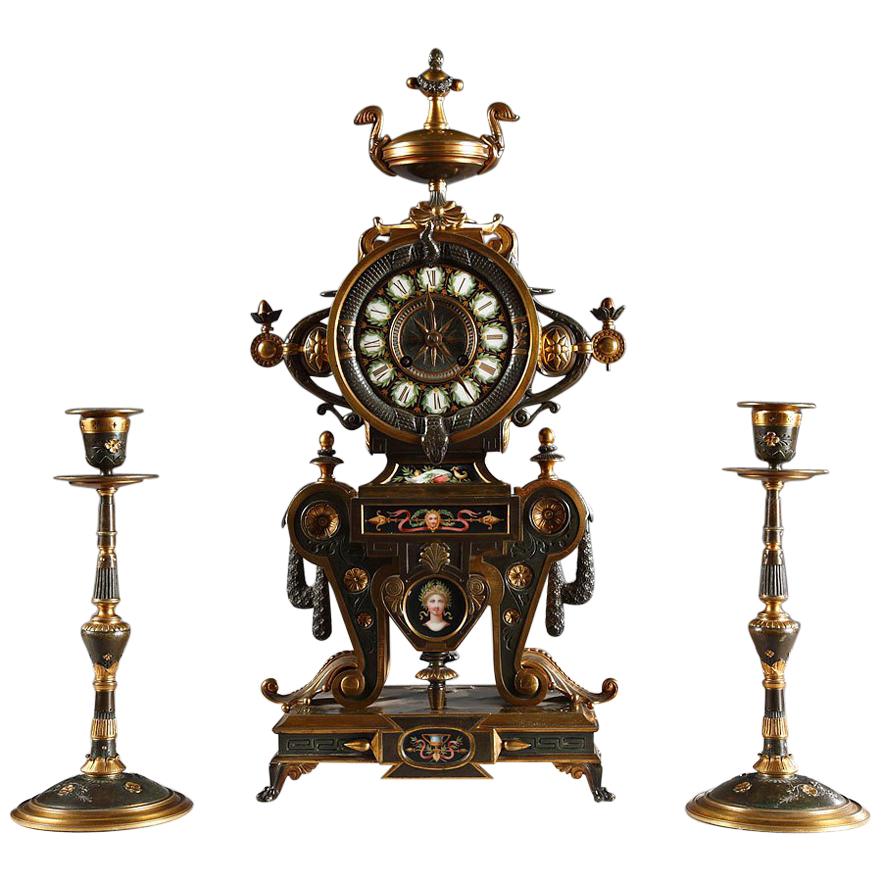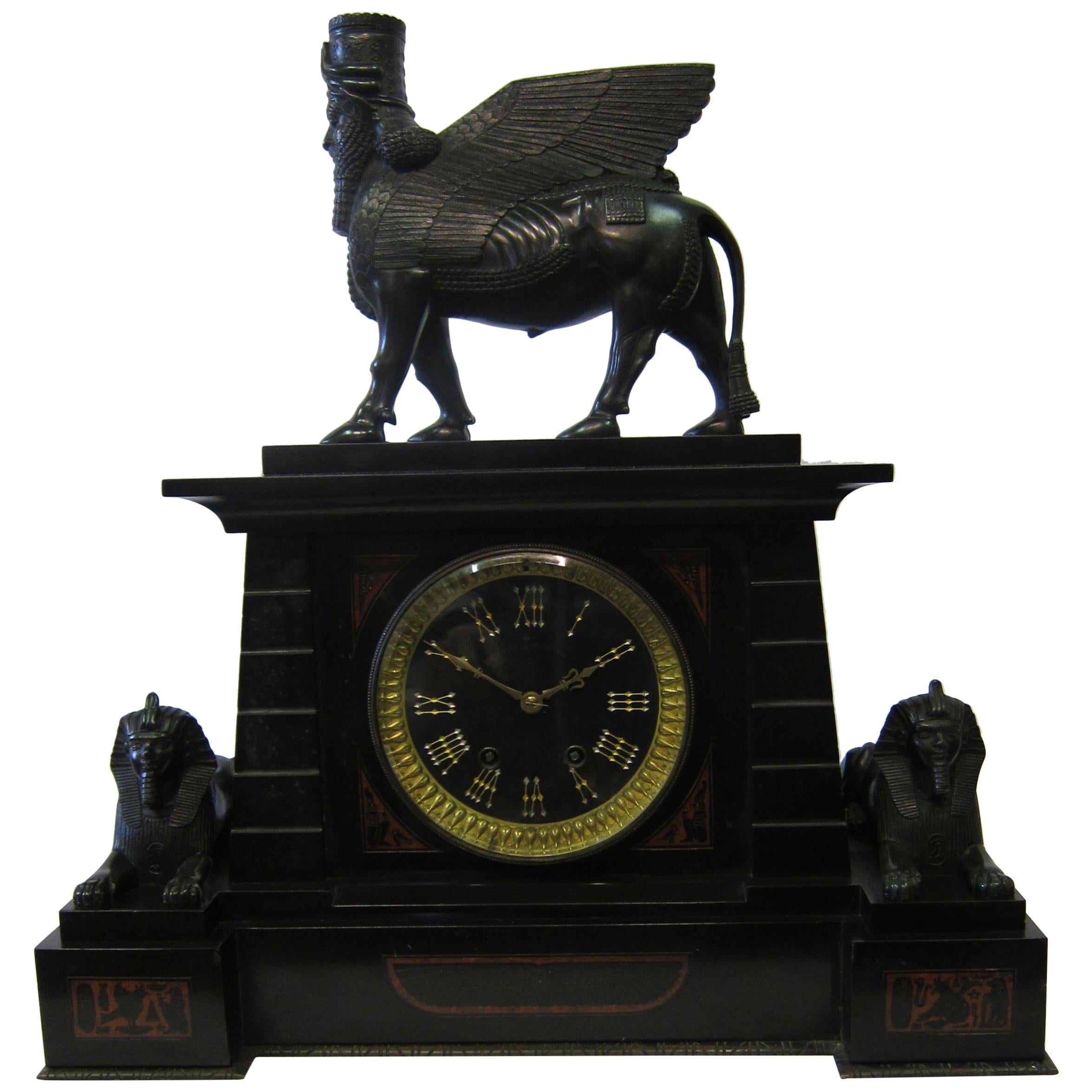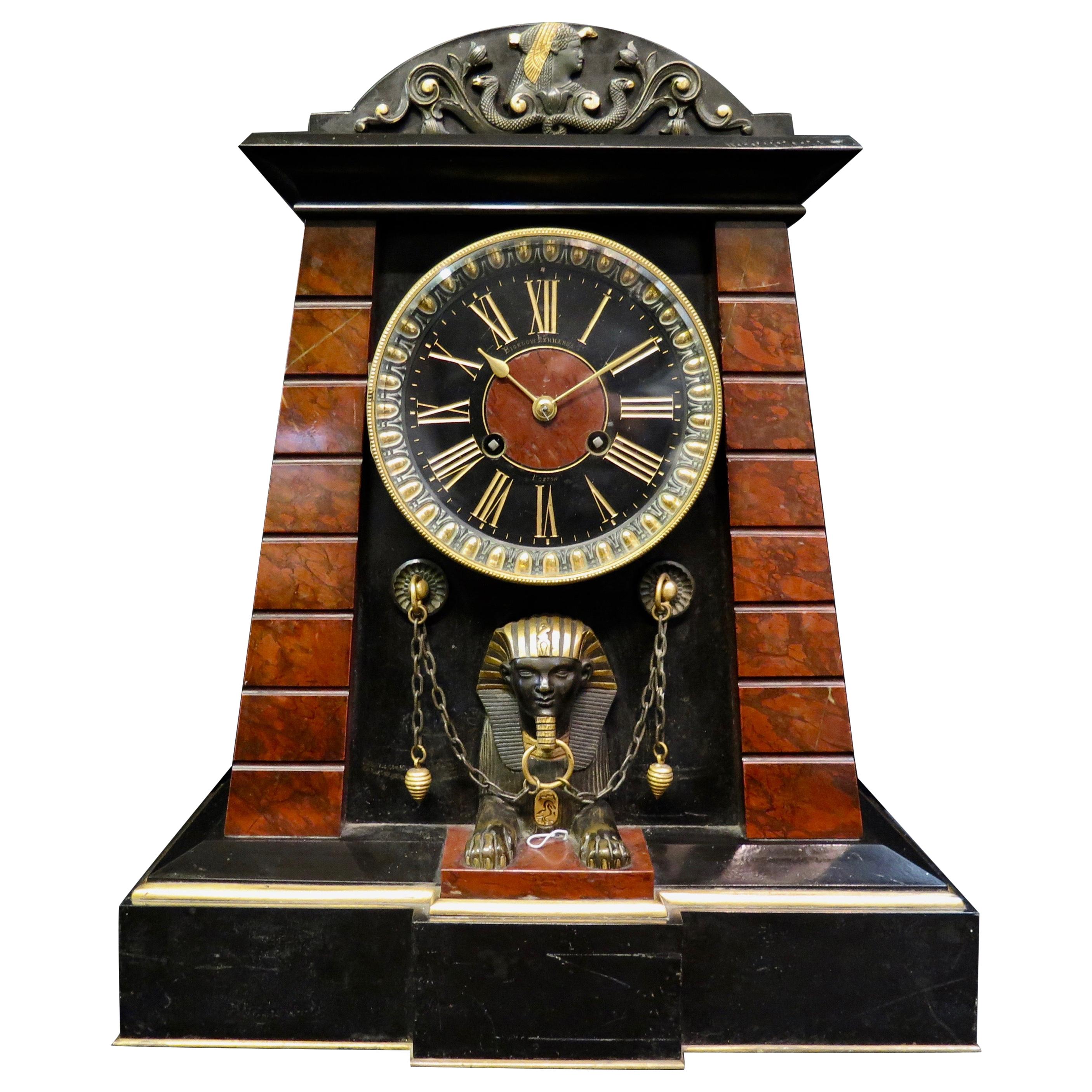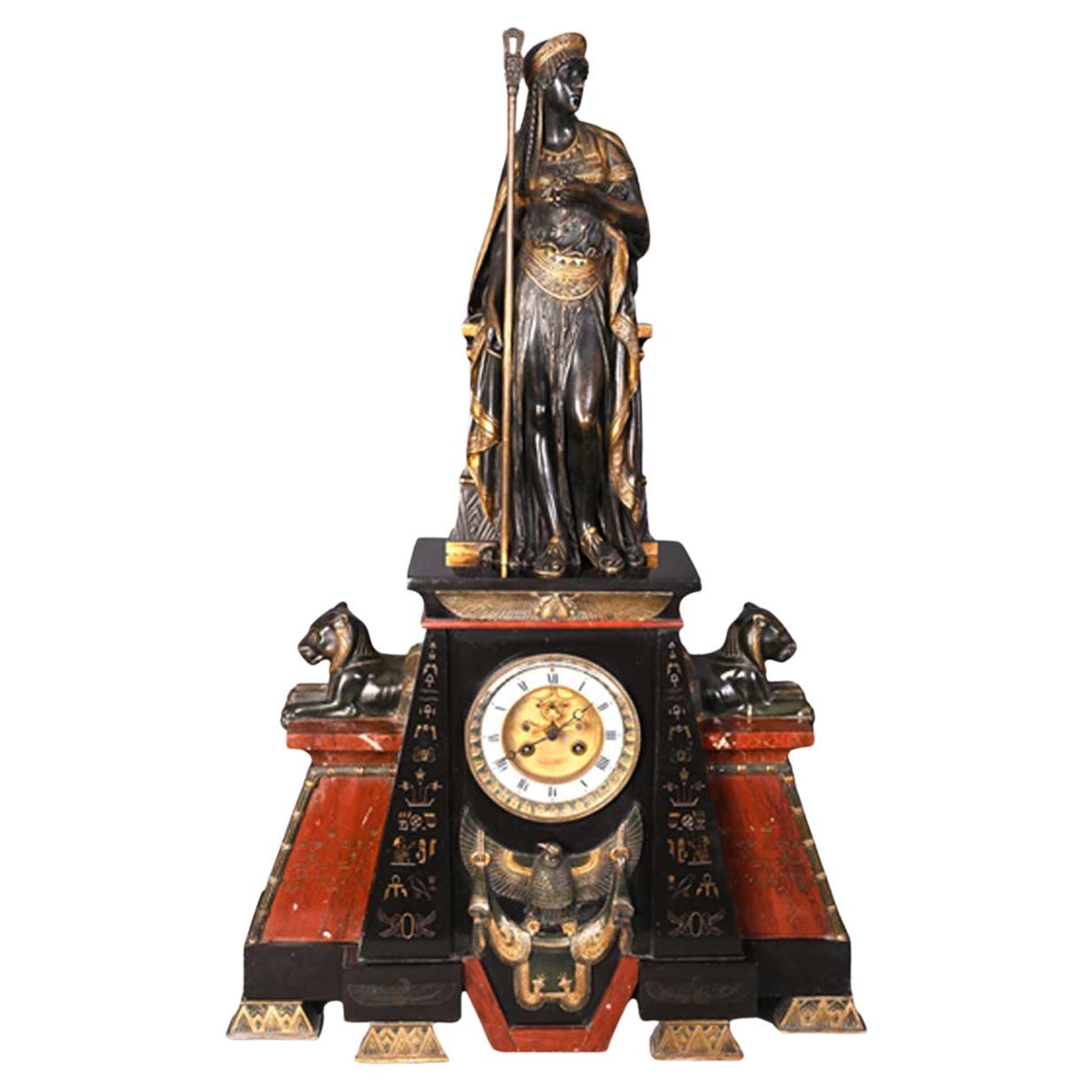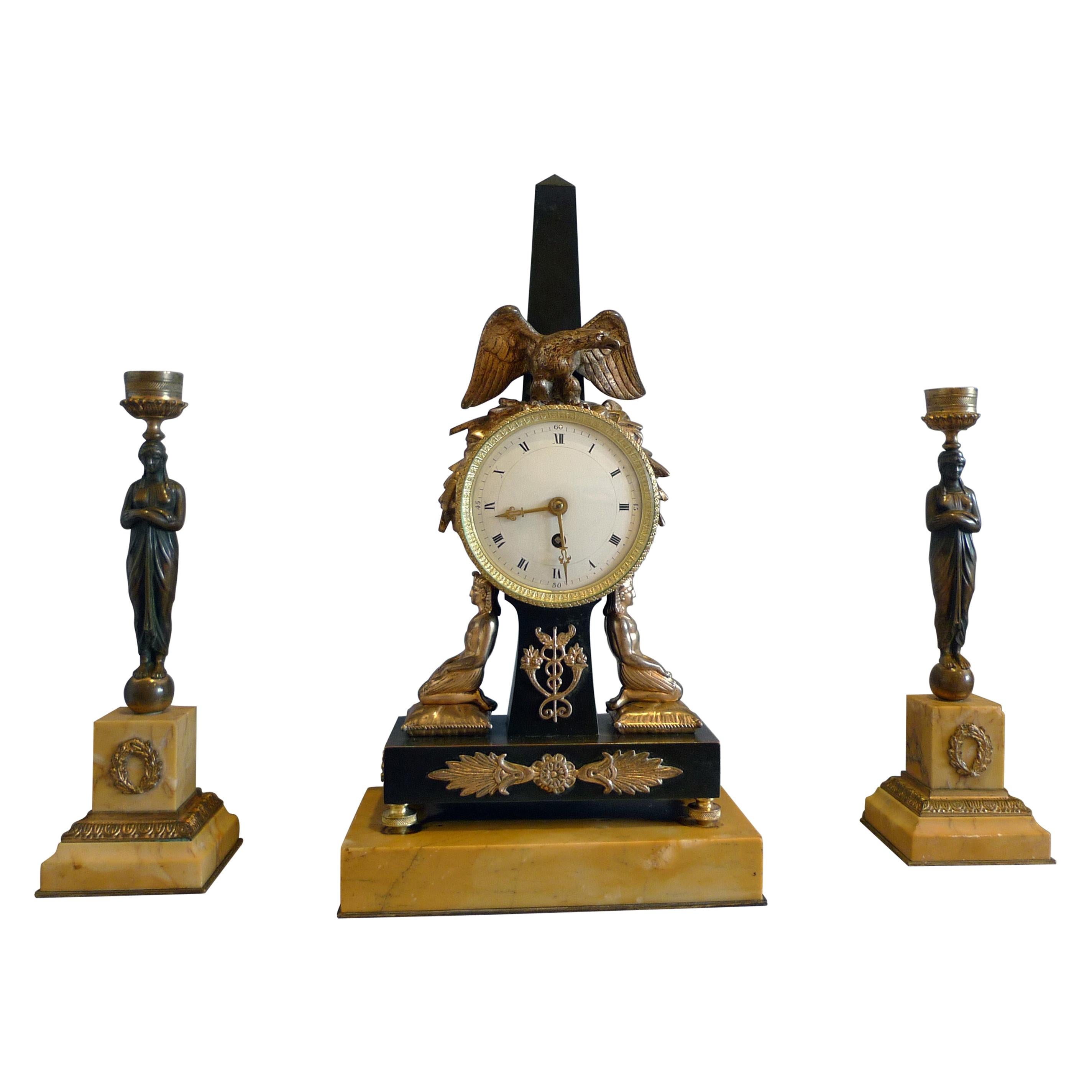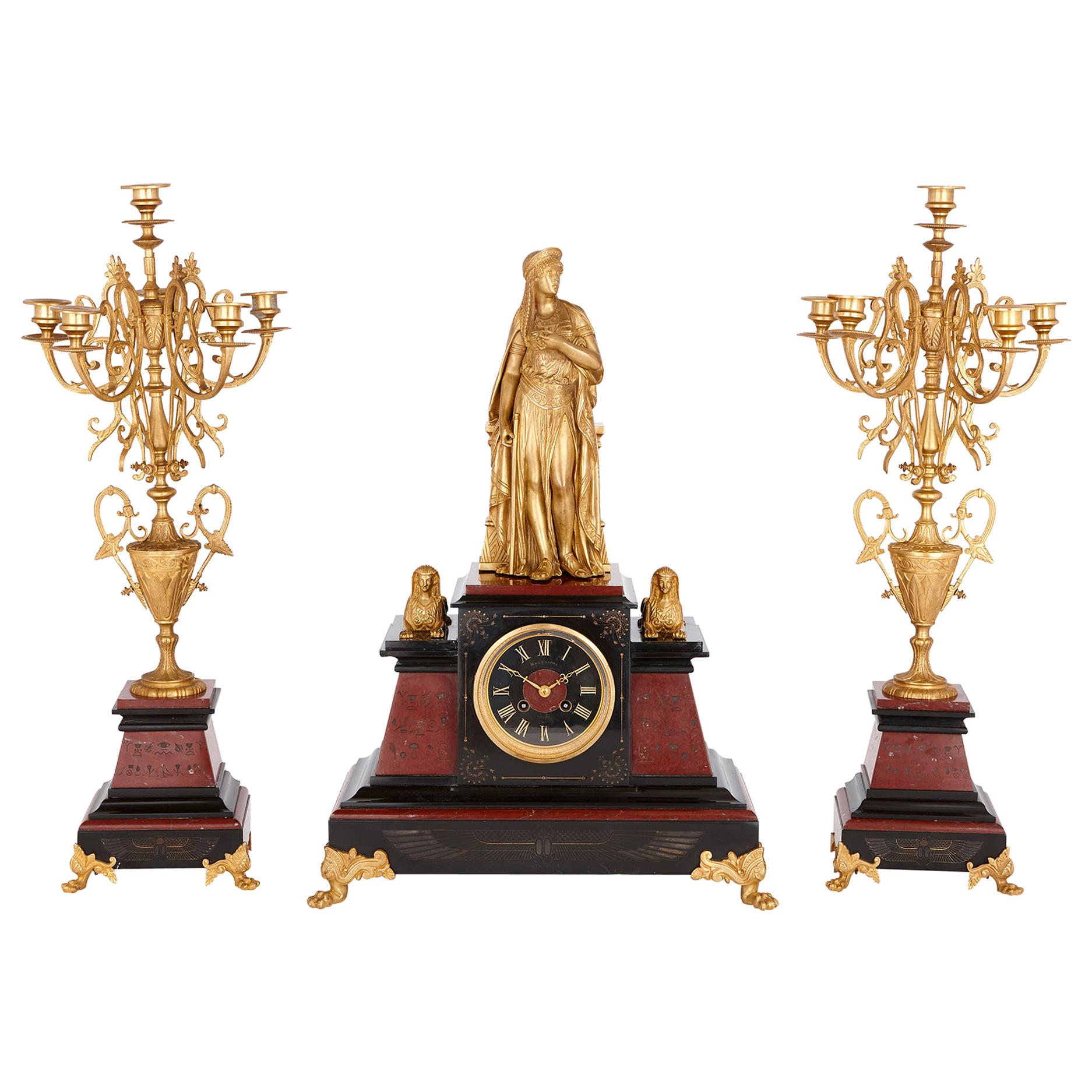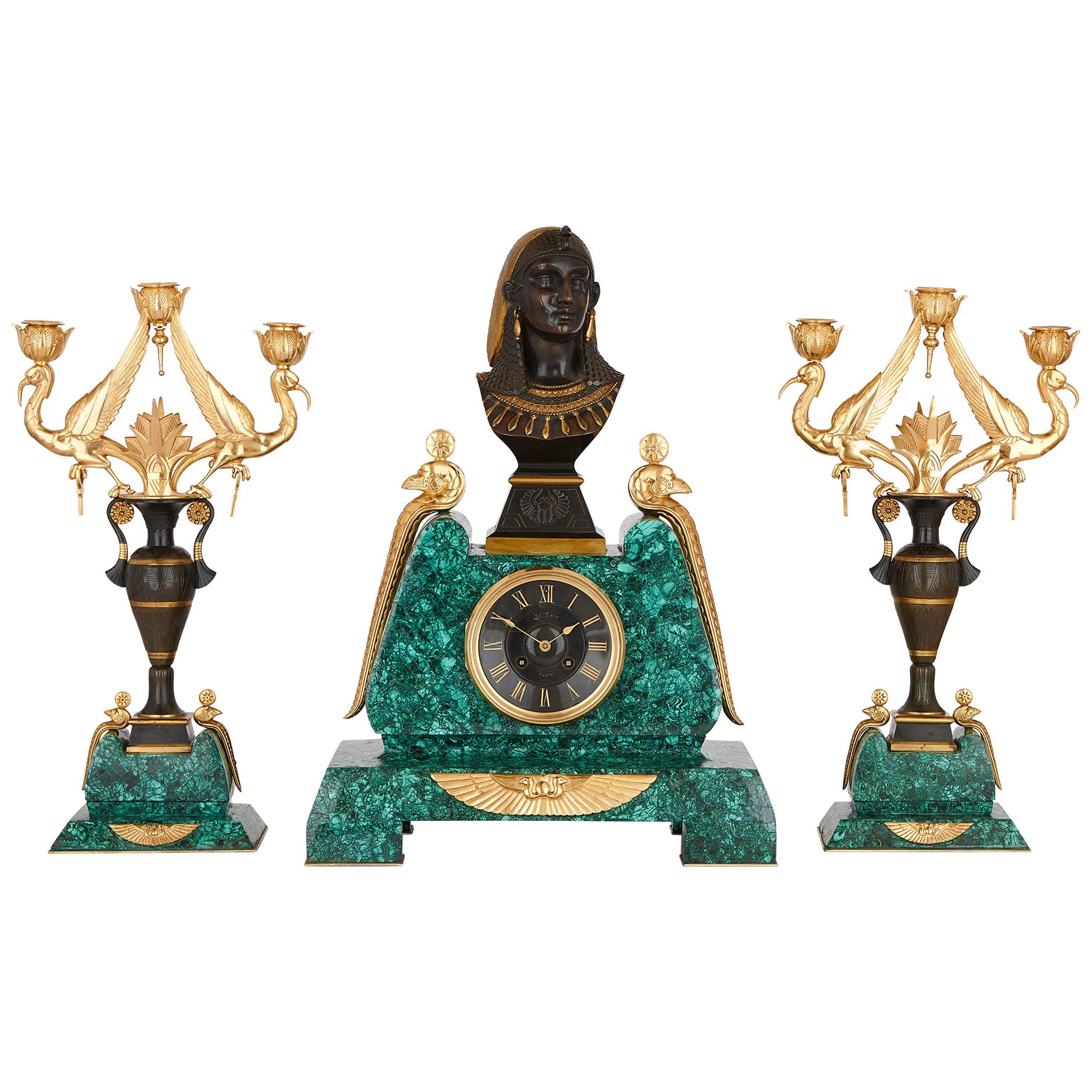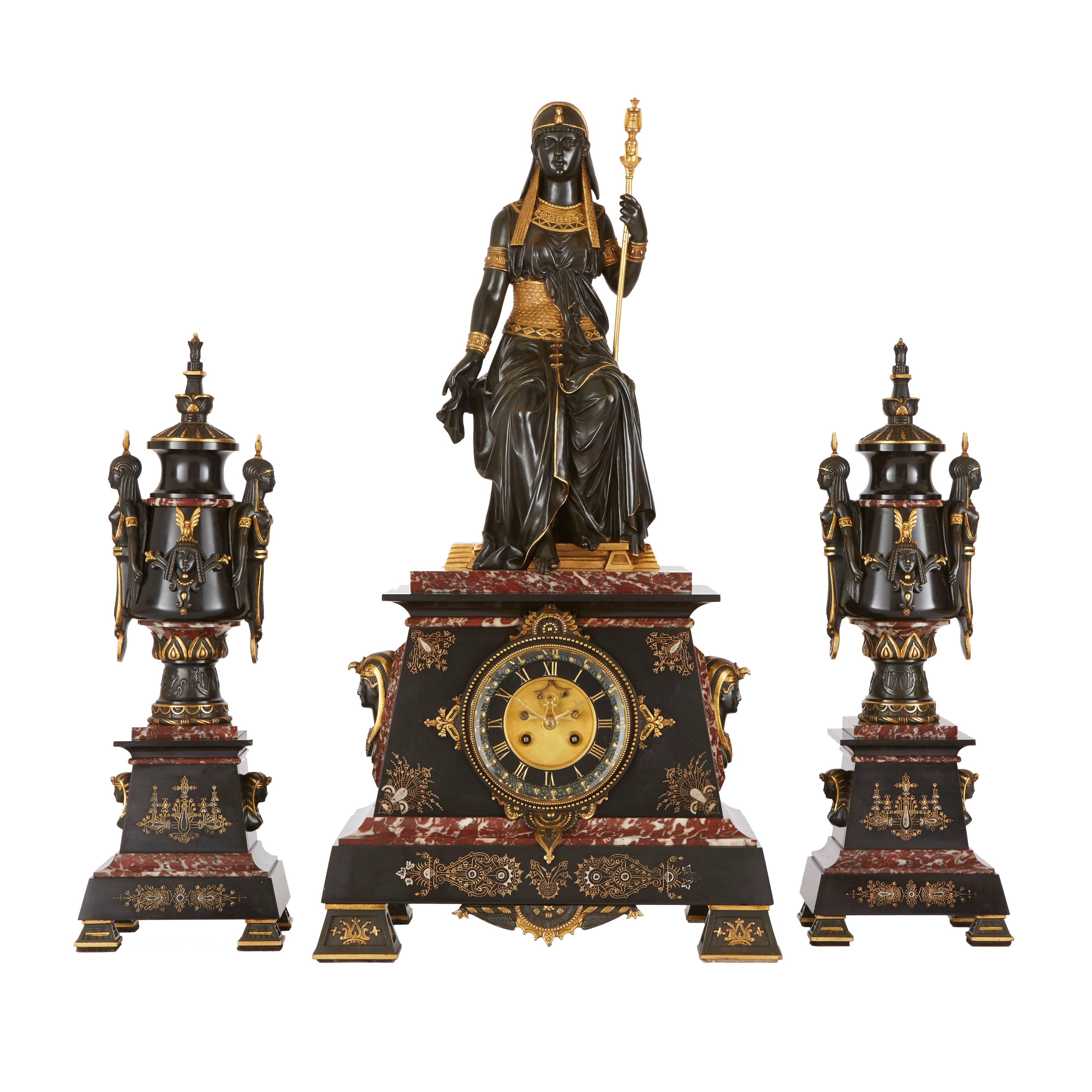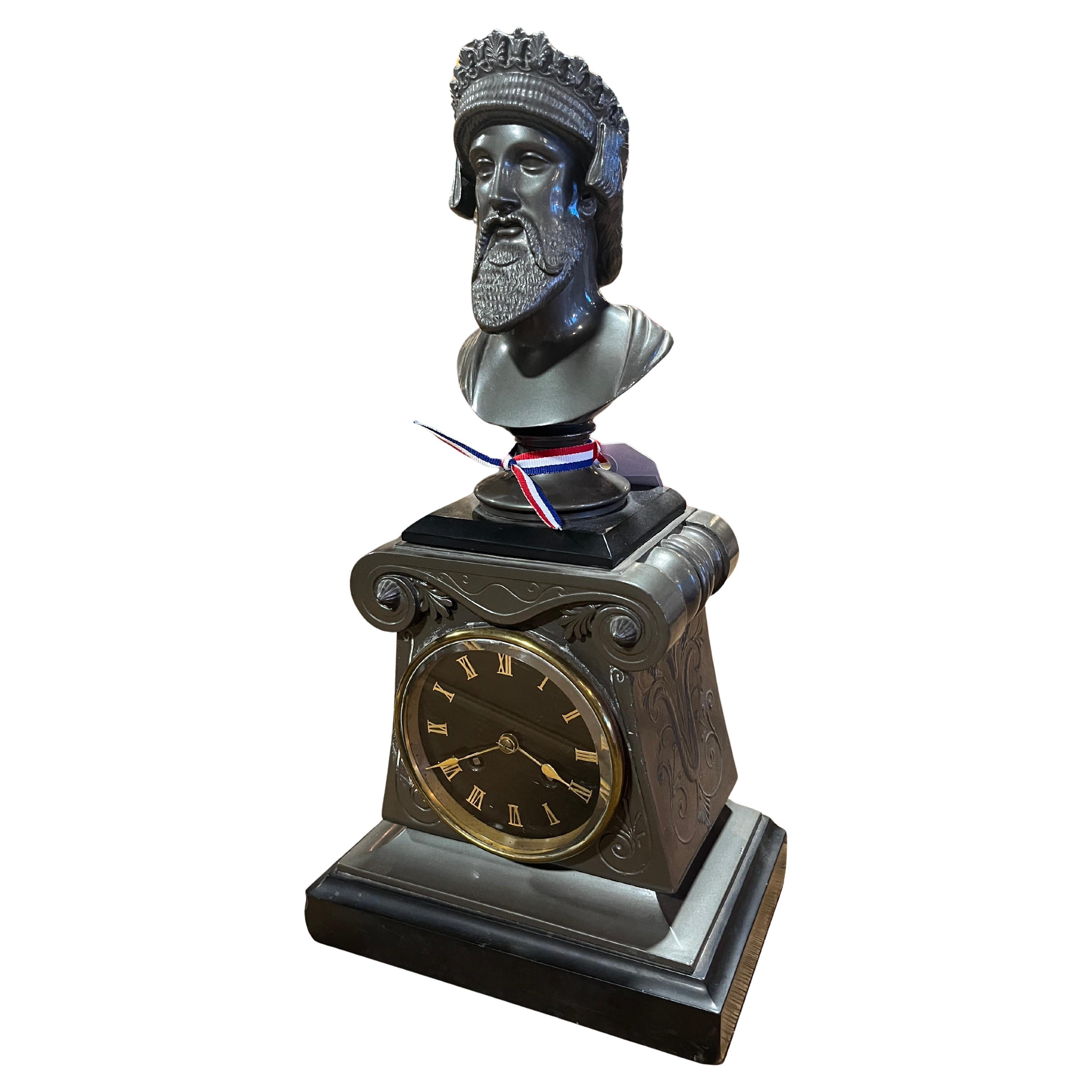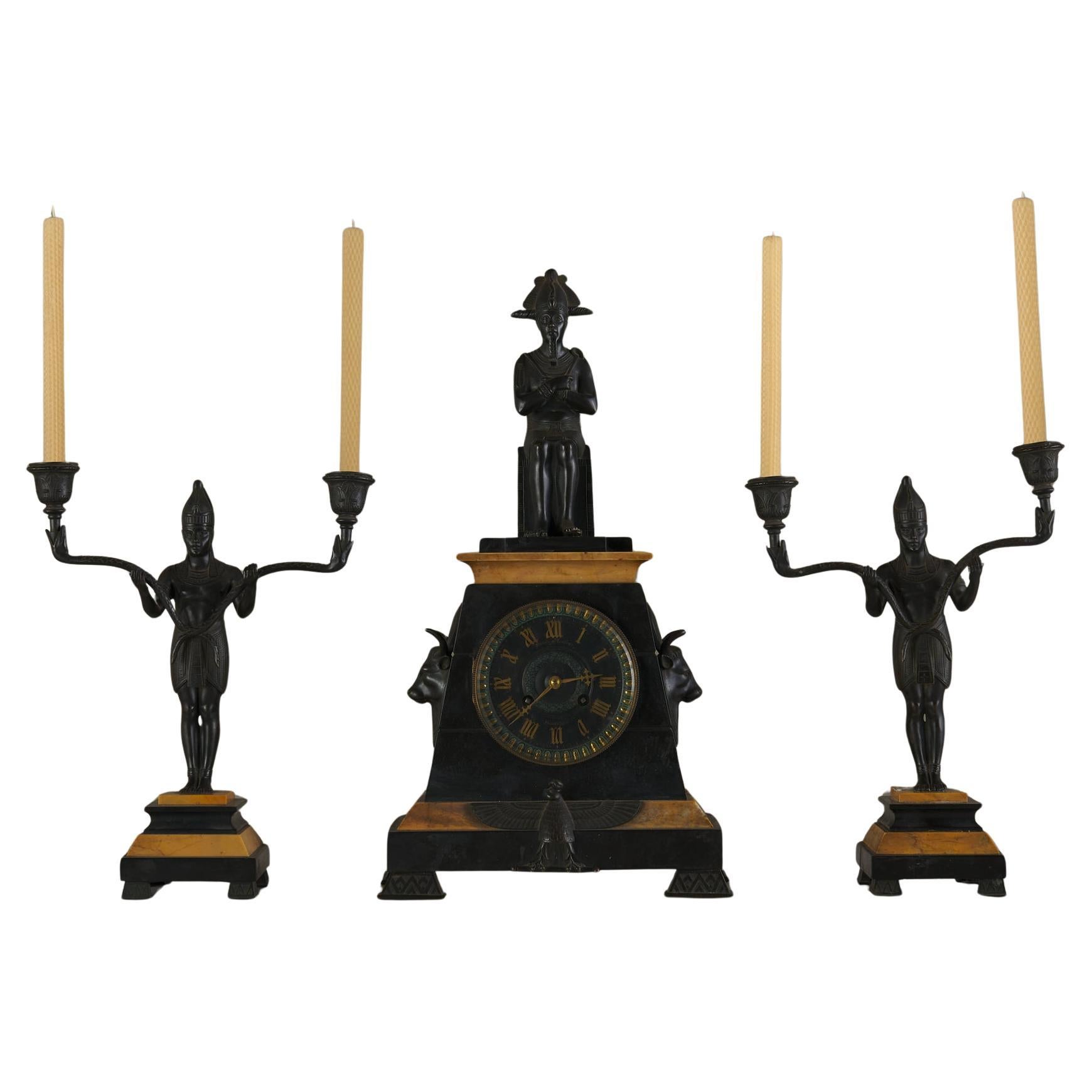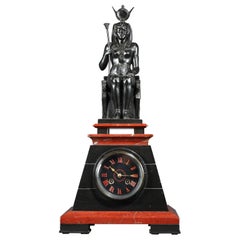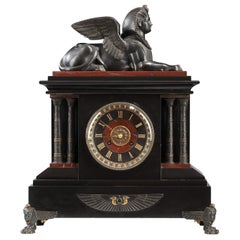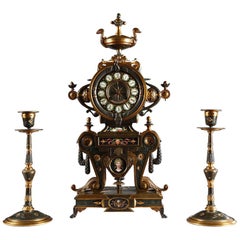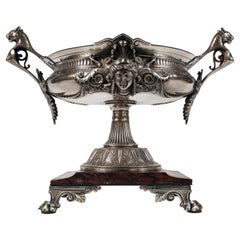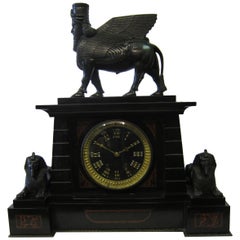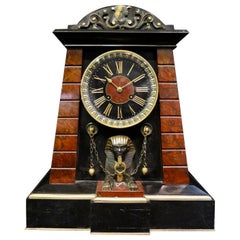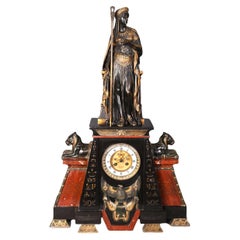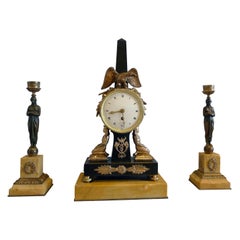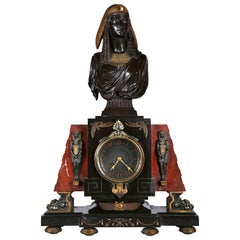
Neo-Egyptian Marble & Bronze Clock by E. Hébert & G. Servant, France, Circa 1867
View Similar Items
Want more images or videos?
Request additional images or videos from the seller
1 of 5
Neo-Egyptian Marble & Bronze Clock by E. Hébert & G. Servant, France, Circa 1867
$15,378.24List Price
About the Item
- Creator:Emile Hébert (Sculptor),Georges Emile Henri Servant (Maker)
- Dimensions:Height: 24.02 in (61 cm)Width: 16.15 in (41 cm)Depth: 7.09 in (18 cm)
- Style:Egyptian Revival (In the Style Of)
- Materials and Techniques:
- Place of Origin:
- Period:
- Date of Manufacture:circa 1867
- Condition:Wear consistent with age and use.
- Seller Location:PARIS, FR
- Reference Number:Seller: 1244/01stDibs: LU3860312490842
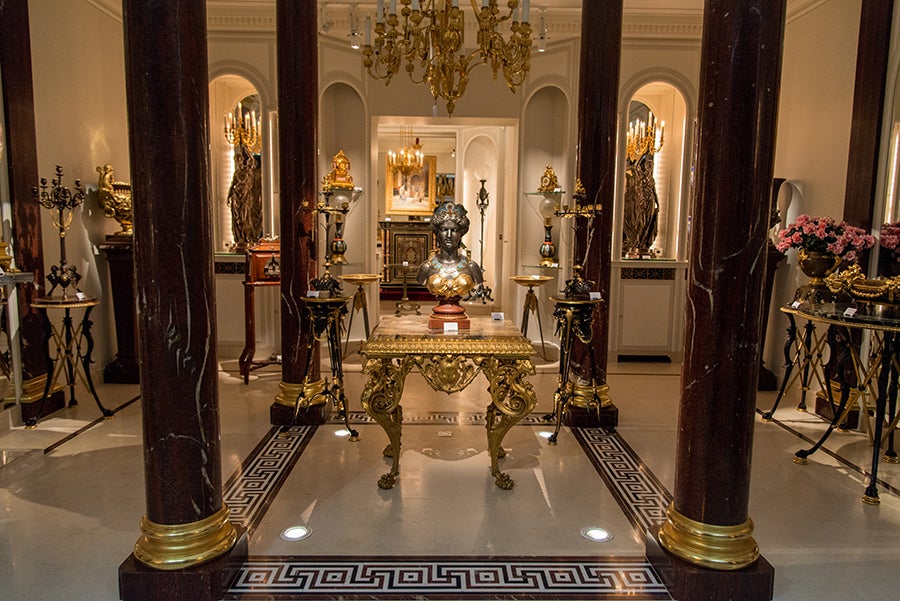
About the Seller
4.9
Vetted Professional Seller
Every seller passes strict standards for authenticity and reliability
Established in 1997
1stDibs seller since 2018
86 sales on 1stDibs
Typical response time: 2 hours
Associations
International Confederation of Art and Antique Dealers' Associations
Authenticity Guarantee
In the unlikely event there’s an issue with an item’s authenticity, contact us within 1 year for a full refund. DetailsMoney-Back Guarantee
If your item is not as described, is damaged in transit, or does not arrive, contact us within 7 days for a full refund. Details24-Hour Cancellation
You have a 24-hour grace period in which to reconsider your purchase, with no questions asked.Vetted Professional Sellers
Our world-class sellers must adhere to strict standards for service and quality, maintaining the integrity of our listings.Price-Match Guarantee
If you find that a seller listed the same item for a lower price elsewhere, we’ll match it.Trusted Global Delivery
Our best-in-class carrier network provides specialized shipping options worldwide, including custom delivery.More From This Seller
View AllNeo-Egyptian Marble Clock Attributed to G. Servant, France, Circa 1870
By Georges Emile Henri Servant
Located in PARIS, FR
Black and red marble pyramid shaped Egyptian style clock attributed to G. Servant, surmounted by a patinated bronze figure representing the Egyptian goddess Isis sitting on her throne. Wearing the Hathor hairdress (the solar disc surrounded by the sacred cow horns), she holds in her right hand the Ouadj, the goddesses scepter surmounted by a canopy of papyrus, symbolizing health and eternal youth and in her left hand, the cross of life Ankh, symbol of rebirth and eternity.
That Egyptian style in fashion since Napoleon the First and his military campaigns in Egypt around 1799 was rediscovered in France in the 1830's and above all in the 1860's. Some renowned French artists, such the sculptors and bronze-casters Guillaume Denière (1815-1903), Emile Hébert (1828-1893) et Georges Servant (1828-1890), presented at the 1867 and 1878 Paris Universal Exhibitions, an a-part section dedicated to their Egyptian style production. Their shows drew then considerable attention from the public and the wealthy collectors. During the 1867 Universal Exhibition, one could admire the Stand realized by the French silversmith-jeweller Gustave Baugrand (1826-1870), where his works executed in most Fine materials took inspiration from the Egyptian Antiques, exhibited then in the Louvre museum.
Georges Emile Henri Servant (1828-c.1890), who took over his father in 1855 at their foundry, rue Vieille-du-Temple, in Paris, specialized in the production of neo-Egyptian style clocks, very popular in France since 1860’s, and also the making of Greek style decorative objects. He drew considerable attention to the high quality of his bronzes at the 1855 Paris Universal Exhibition and then at the 1862 London Exhibition. At this time Servant exported up to 40% of his production, principally to the United States, where for instance, his clocks were sold with great success by Louis Tiffany Inc. or Hamann & Roche of New York. But his success came really at the 1867 Paris Universal Exhibition, where he was awarded a gold medal for his neo-Greek and Egyptian works (Les Merveilles...
Category
Antique 1870s French Egyptian Revival Table Clocks and Desk Clocks
Materials
Marble, Bronze
Neo-Egyptian Bronze and Marble Clock Attributed to G.Servant, France, Circa 1870
By Georges Emile Henri Servant
Located in PARIS, FR
A black and red marble clock in the shape of an Egyptian temple attributed to G. Servant, flanked by double columns inscribed with hieroglyphs and ornated with a winged uraeus, all made in two patina bronze. The clock is surmounted by a patinated bronze sphinx. Resting on four bronze faces wearing the nemes and terminating in lion paw feet.
Georges Emile Henri Servant (circa 1828-1890) who took over his father in 1855 at their foundry, rue Vieille-du-Temple, in Paris, specialized in the production of neo-Egyptian style clocks, very popular in France since 1860s, and also the making of Greek style decorative objects. He drew considerable attention to the high quality of his bronzes at the 1855 Paris Universal Exhibition and then at the 1862 London Exhibition. At this time Servant exported up to 40% of his production, principally to the United States, where for instance, his sphinx clocks were sold with great success by Louis Tiffany Inc. or Hamann & Roche of New York (A similar clock is now exposed at the Metropolitan Museum of Art, New York). But his success came really at the 1867 Paris Universal Exhibition, where he was awarded a gold medal for his neo-Greek and Egyptian works (Les Merveilles...
Category
Antique 1870s French Egyptian Revival Mantel Clocks
Materials
Marble, Bronze
Fine Neo-Greek Clock Set by H. Houdebine, France, Circa 1867
By Henri Houdebine
Located in PARIS, FR
Dial signed H. Houdebine, Fabricant de Bronzes, Rue de Turenne 64, Paris
and clockwork signed Japy Frères & Cie – Médaille d’Honneur
A very fine neo-Greek style clock set made up of...
Category
Antique 1860s French Greek Revival Table Clocks and Desk Clocks
Materials
Bronze
$10,572 Sale Price / set
29% Off
Neo-Greek Silvered Bronze Bowl Attributed to G. Servant, France, circa 1880
By Georges Emile Henri Servant
Located in PARIS, FR
Beautiful silvered bronze neo-Greek style bowl in a circular shape, adorned on the body with female masks in the antique style and on the sides with handles in the shape of busts of ...
Category
Antique 1880s French Greek Revival Decorative Bowls
Materials
Griotte Marble, Bronze
Pair of Neo-Greek Bronze Candelabras Attributed to G.Servant, France, Circa 1870
By Georges Emile Henri Servant
Located in PARIS, FR
Rare pair of Greek style candelabras made in patinated bronze and gilded bronze, attributed to G. Servant. Each with ten light arms topped by a heron shaped extinguisher. Decorated with various Greek style motifs such palmets, pine cones ans water leaves. Standing on a small triangular architecture presenting a theatre mask and reposing on a tripod base formed with lion paw feet.
Georges Emile Henri Servant (circa 1828-1890), who took over his father in 1855 at their foundry, rue Vieille-du-Temple, in Paris, specialized in the production of neo-Egyptian style clocks, very popular in France since 1860’s, and also the making of Greek style decorative objects. He drew considerable attention to the high quality of his bronzes at the 1855 Paris Universal Exhibition and then at the 1862 London Exhibition. At this time Servant exported up to 40% of his production, principally to the United States, where for instance, his clocks were sold with great success by Louis Tiffany Inc. or Hamann & Roche of New York. But his success came really at the 1867 Paris Universal Exhibition, where he was awarded a Gold Medal for his neo-Greek and Egyptian works (Les Merveilles...
Category
Antique 1870s French Greek Revival Table Lamps
Materials
Bronze
$8,289 Sale Price / set
62% Off
Pair of Neo-Greek Pedestals, attributed to G.Servant, France, Circa 1880
By Georges Emile Henri Servant
Located in PARIS, FR
Pair of patinated and gilded bronze turntable pedestals with for each of them, three paw feet, headed by stylized lion muzzles, ornated with beaded chains and joined by a fine foliate stretcher. The belt is adorned by a banded frieze cast in low-relief representing an ancient scene : “The Battle of the Lapithes and the Centaurs”.
These pedestals can be associated with the "Vases de Bacchus", presented by G. Servant at the 1867 Exposition Universelle, on which the similar ornamentation is applied.
(Reproduced in « Merveilles de l'Exposition Universelle de 1867 », Jules Mesnard, p°167)
Biography :
Georges Emile Henri Servant...
Category
Antique 1880s French Greek Revival Pedestals
Materials
Bronze
You May Also Like
Egyptian Revival Bronze and Marble French Mantle Clock
By Mermod Jaccard & Co.
Located in Bronx, NY
This wonderful 1920s Egyptian Revival clock is surmounted with an Assyrian style lamassau (human headed winged lion) and flanked by a pair of re...
Category
Early 20th Century French Egyptian Revival Mantel Clocks
Materials
Belgian Black Marble
French Egyptian Revival Patinated Bronze and Marble Mantle Clock
By Bigelow Kennard & Co.
Located in Bronx, NY
The clock having domed trapezoidal case, dome with bronze relief to front depicting a partial gilt Egyptian goddess, Isis, flanked by cobras and lotus scrolls, red marble ribbed columns to sides, clock face with gilt egg-and-dart border, gilt hands and mounts, clock face engraved BIGELOW KENNARD & CO. BOSTON, double-barrel clock movement by Achille Brocot, down to chained sphinx protruding from lower case, raised on stepped plinth. This vintage mantle clock...
Category
Antique Late 19th Century American Egyptian Revival Mantel Clocks
Materials
Marble
Egyptian Revival Mantel Clock, 19th Century
By Georges Emile Henri Servant
Located in SAINT-OUEN-SUR-SEINE, FR
Mantel clock in patinated and gilt bronze, with red and black marble, in the Egyptian Revival style of the 19th century.
The composition features a standing female Egyptian figure h...
Category
Antique 19th Century French Egyptian Revival Mantel Clocks
Materials
Marble, Bronze
Egyptian Style Clock Set in Patinated Bronze and Sienna Marble
Located in London, GB
Stylish French clock set in the Retour d'Egypt style based on French Empire clocks from the early 19th century. The clock set upon a good rectangular Sienna marble base on which are ...
Category
Antique 1860s French Egyptian Revival Mantel Clocks
Materials
Siena Marble, Bronze
Antique Egyptian Revival Style Marble and Gilt Bronze Clock Set
Located in London, GB
This clock set is designed in the Egyptian Revival style, which was in vogue in Europe and America in the 19th century. The fashion was kick-started by Emperor Napoleon I’s campaign in Egypt in 1798-1799. This led to the publication of ‘Le Description de l’Égypte’ (The Description of Egypt) in 1809 (and a second edition in 1830), which documented various aspects of Egyptian culture, including the pyramids, antiquities, ancient and modern buildings, Egyptian clothing...
Category
Antique 19th Century French Egyptian Revival Mantel Clocks
Materials
Marble, Ormolu, Bronze
Egyptian Revival Malachite, Marble, Gilt and Patinated Bronze Clock Set
By Charles Le Roy
Located in London, GB
This magnificent clock set is signed ‘Le Roy’, most likely for Le Roy et fils. Founded in 1785, Le Roy et fils was an acclaimed French clock-making firm...
Category
Early 20th Century French Egyptian Revival Mantel Clocks
Materials
Marble, Malachite, Bronze
Recently Viewed
View AllMore Ways To Browse
Striking Clock
French Ormolu Mantel Clock
World Clock
Eight Clock
Antique Time Clock
Antique French Bell
Brass Trains
Antique French Ormolu Gilt Clock
Ormolu Cherubs
Gilded Clock
French Ormolu Bronze Clock
Antique Blue Clocks
Bronze Putti
French Gilt Swags
Antique Silver Clock
Marble And Bronze Clock
Roman Keys
Antique Laurel Wreath
